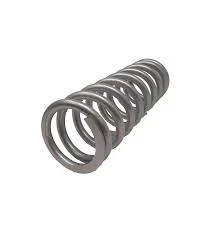
- Mobile Phone
- +8613931874955
- sales@cntcmetal.com
stainless steel net
Understanding Stainless Steel Nets Versatility and Applications
Stainless steel nets are becoming increasingly popular across various industries due to their unique properties and versatility. Made from stainless steel wires, these nets provide a durable and corrosion-resistant solution for a myriad of applications that require strength and longevity. In this article, we will explore the different uses, advantages, and maintenance of stainless steel nets.
What is Stainless Steel Netting?
Stainless steel netting is manufactured by weaving or welding stainless steel wire into mesh or net configurations. The composition of stainless steel, often comprising chromium and nickel, ensures that these nets resist rust, tarnish, and corrosion, which are critical factors in outdoor or moist environments. The most commonly used grades include 304 and 316 stainless steel, with the latter offering enhanced resistance to saltwater and other harsh conditions.
Applications of Stainless Steel Nets
1. Industrial Use In industrial settings, stainless steel nets serve diverse purposes such as guarding machinery, filtering materials, and securing areas to prevent unauthorized access. Their durability allows them to withstand heavy wear and tear, making them ideal for factories and warehouses.
2. Construction and Architecture Architecturally, stainless steel nets can be utilized in facades, railings, and as part of structural design elements. Their aesthetic appeal combined with strength offers a modern touch to buildings while ensuring safety and security.
3. Agriculture In agriculture, stainless steel nets are commonly employed for fencing and protecting crops from animals. Their strength and resistance to rust mean they can endure various weather conditions without deteriorating, ensuring long-term use.
4. Food Processing Since stainless steel is hypoallergenic and easy to clean, it is widely used in the food industry. Stainless steel nets are utilized in conveyors, filters, and barriers within food processing plants, maintaining hygiene standards while offering strength.
5. Marine Applications The marine environment is harsh, making corrosion resistance vital. Stainless steel nets are often used in marinas, fishing, and aquaculture, where they can resist the saltwater, providing protection and support for various marine species.
stainless steel net

6. Safety and Security Stainless steel nets are also used in safety applications, such as fall protection nets, safety barriers, and enclosures for playgrounds. Their robust nature ensures they can handle impacts and prevent accidents effectively.
Advantages of Stainless Steel Nets
- Corrosion Resistance The primary benefit of using stainless steel nets is their resistance to corrosion. This property makes them ideal for various applications across different environments, including seaside locations.
- Strength and Durability Stainless steel nets are incredibly strong, capable of withstanding significant stress and pressure without deformation. This makes them reliable for heavy-duty applications.
- Aesthetic Appeal With their sleek, shiny finish, stainless steel nets offer a modern look that can enhance the aesthetic appeal of buildings and landscapes.
- Low Maintenance The smooth surface of stainless steel prevents build-up of dirt and grime, making it easier to clean and maintain over time compared to other materials.
Maintenance of Stainless Steel Nets
Maintaining stainless steel nets is relatively simple. Regular inspections should be conducted to identify any signs of wear or damage. Cleaning can be done with mild soap and water, avoiding harsh chemicals that could corrode the surface over time. In environments with saltwater or corrosive materials, it is advisable to clean the nets more frequently to ensure longevity.
Conclusion
Stainless steel nets provide a powerful and versatile solution for a variety of applications across multiple industries. With their unique combination of durability, corrosion resistance, and aesthetic value, they are a go-to choice for many professionals looking to invest in long-lasting materials. As technology progresses and the need for sustainable solutions grows, the importance of stainless steel nets will likely continue to rise, solidifying their place in contemporary design and industrial applications. Whether used in construction, agriculture, or marine settings, stainless steel nets are undoubtedly a smart investment for the future.
share:
-
Yard Sign Stakes: Reliable Guardians of Outdoor SignsNewsAug.04,2025
-
Wall Ties: Invisible Guardians of Building StabilityNewsAug.04,2025
-
Resilient Web: The Super Guardian Power of Concrete MeshNewsAug.04,2025
-
Masonry Accessories: A versatile assistant on building foundationsNewsAug.04,2025
-
Iron Binding Wire: the 'invisible reinforcement specialist' in the fields of architecture and industryNewsAug.04,2025
-
Dynamic Spring: The diverse functions and excellent performance of Wire Tension SpringNewsAug.04,2025
-
Your Source for Concrete Wall Ties and Masonry AccessoriesNewsJul.10,2025



















